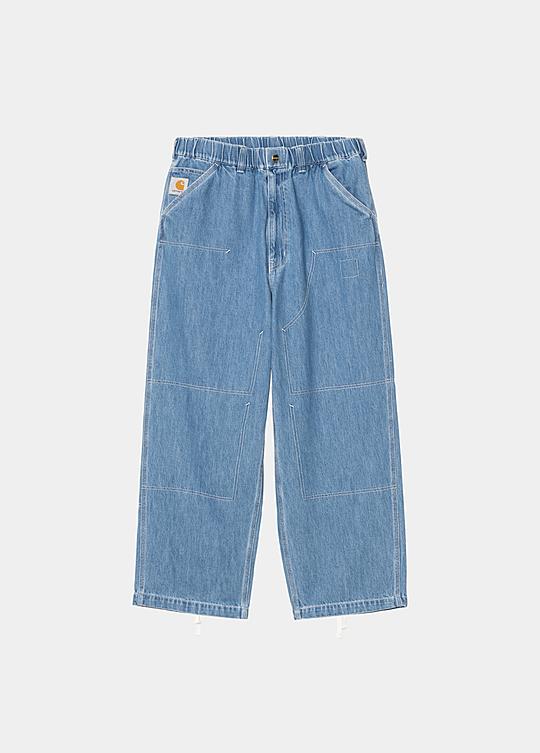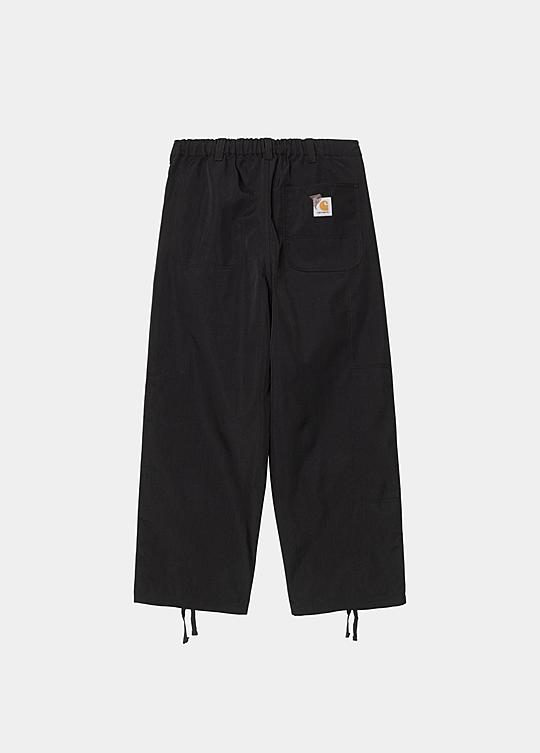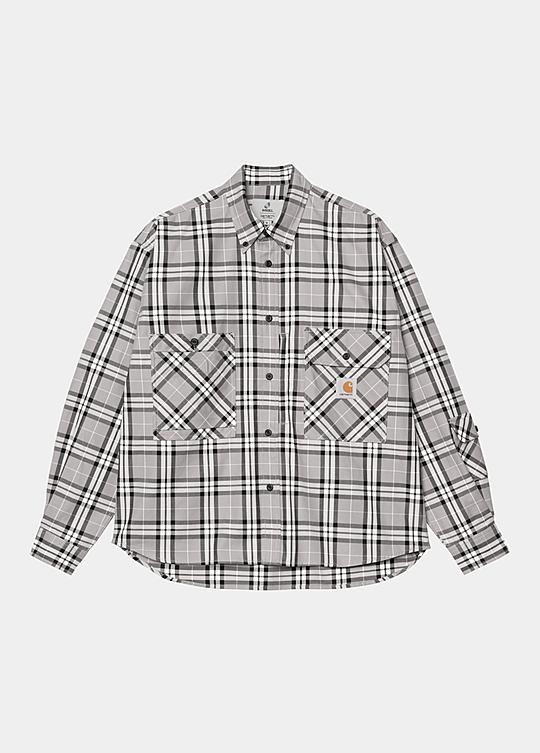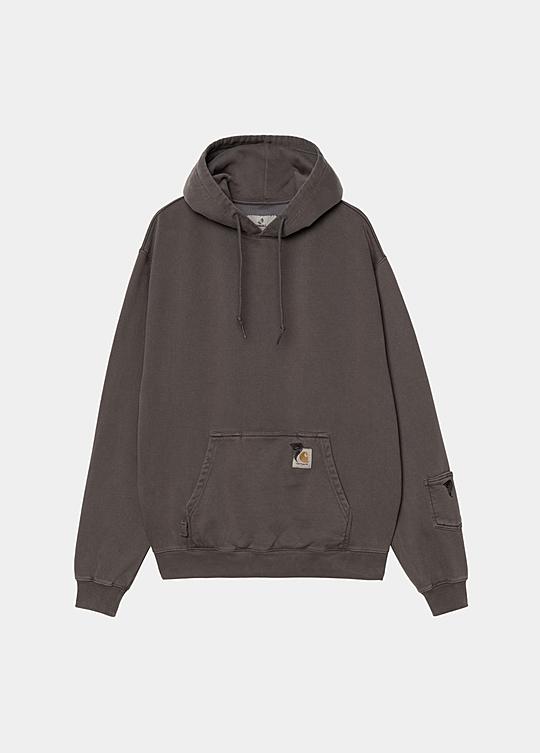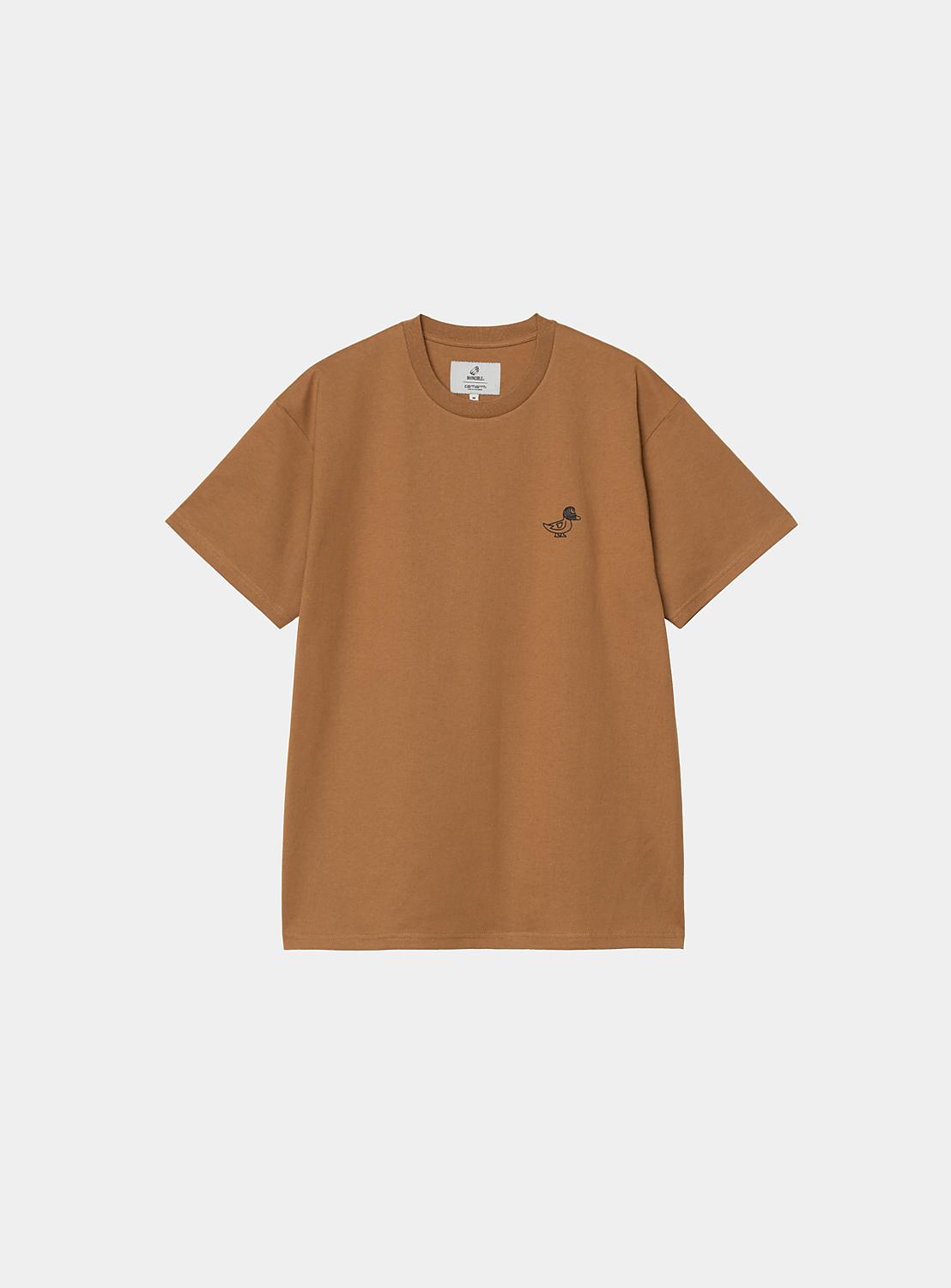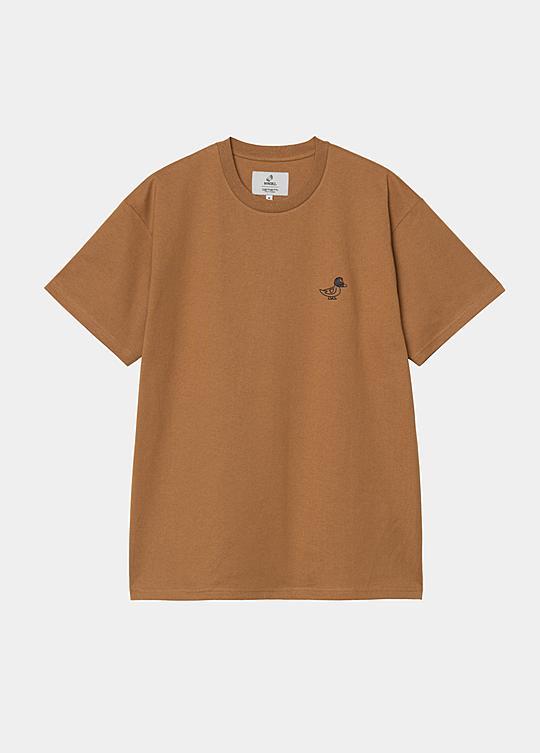We have a Carhartt WIP website for customers in the US and Canada. Now offering domestic shipping and returns. Check it out.mers in the US and Canada. Now offering domestic shipping and returns. Check it out.
"What if I Tried This?"
- Date published
- 16-dic-2024
Designer Shinsuke Nakada on Archives, Ephemera and Creating Items That Seem Unlikely.
Writer W. David Marx visited designer Shinsuke Nakada at his Tokyo studio, to explore his work on a unique capsule collaboration between Carhartt WIP and INVINCIBLE®.
Photographer: E-WAX
Writer: W. David Marx

A bust of Ronald McDonald looks down on us as we speak. Sat in the cozy top-floor studio of clothing designer Shinsuke Nakada, nestled deep in the quiet Sendagaya area of the Japanese capital, the looming clown’s face is the first sign of a unique design sensibility. The back wall of the studio is covered in rare and unique tchotchkes from around the world: tortilla chip fridge magnets, donut-shaped tape measures, a Google frisbee, a Nintendo controller keychain, and a spaceman-shaped Clanky Syrup bottle. All around us are racks and racks of vintage garments, as well as key pieces from UNLIKELY, the brand Nakada launched in 2023.
Recently described by GQ as “the most quintessential” brand in what it labels the “fourth wave” of Japanese menswear, UNLIKELY plays with elements of the male wardrobe that we are all familiar with, reworking collegiate, outdoor and Americana-influenced staples to create a compelling vision of Japanese casualwear.
Perhaps such success should come as little surprise. Nakada is well versed in this specific world of design, working at legendary Japanese retailer BEAMS and eventually rising to Creative Director across many of its multiple lines. During his tenure, he helped BEAMS venture into design work for other companies – something that can be felt in Nakada’s own approach, which has a knack for emphasizing the subtle qualities and details of familiar fashion archetypes. In 2020, Nakada also partnered with the famed fishing goods company Daiwa to launch its own outdoor fashion line, DAIWA PIER39, a project he continues to lead.
In 2023, Nakada worked with Carhartt WIP on a special capsule collection as part of brand and retailer INVINCIBLE®’s 15th anniversary, that deconstructed classic jackets and pants in many unexpected ways. This fall, Nakada has unveiled yet another capsule collection with Carhartt WIP that extends the concepts from the first collection into new directions and materials.

W. David Marx: Where did you grow up?
Shinsuke Nakada: I'm from Utsunomiya, Tochigi. When I was a kid, no one knew anything about Utsunomiya, but it later became famous as Japan’s top city for gyoza dumpling consumption. My father worked for the audio manufacturer Aiwa, and in the late 1960s, they sent him to Chicago. He came back and became a technical instructor in Utsunomiya, where he met my mother, who had graduated from an art college and became an architect. For some reason, it was a relatively stylish household.
My brother and I both had very obsessive, nerdy dispositions. But where he was into anime, I was into clothing.
WDM: How did you first get into fashion?
SN: My parents were very influential on my style. My father picked up Ivy League style from his time living in Chicago in the late 60s. My mother dressed me like a dress-up doll in elementary school, but by the first year of junior high school, I became interested in fashion myself.
Utsunomiya was very into a casual biker-influenced style at the time called shibukaji (from “Shibuya casual”) — Vanson leather jackets, 517 bootcut jeans, ring boots or Tony Lama Western boots. The first thing I ever bought with my own pocket money was a pair of off-white Levi’s selvedge denim jeans, a pack of Hanes T-shirts, and Champion socks with the C mark on them. From there, I got swept up in the vintage clothing boom. Varsity jackets and nylon coach jackets were very big at the time.
A few years later, there was a craze for outdoor gear. My friends and I would order Patagonia through the catalog. I’d go around collecting money from them. I also wore Columbia fishing vests, Gramicci shorts, Birkenstock Arizonas, Gregory backpacks, and Wigwam ragg socks. It was a sensation at the time to drink bottled water, so people wore a bottle holder to show off what they were drinking. And there was a craze for vintage sneakers. I’d compete with my friends to buy old Cortez and other Nikes.
Then in high school, I became interested in the Ura-Harajuku streetwear scene. I really admired Hiroshi Fujiwara and his brand Goodenough. I bought a lot of Undercover.


WDM: Did you shop at BEAMS as a teenager?
SN: I only went there a few times in high school. Honestly I didn’t really get it yet.
During my sophomore year of college, I never went to class and spent all my time doing a part-time job at a local store that carried Goodenough. One day, I saw a guy from another shop wearing this amazing, distinctive style of St. James Basque striped shirts, pink Levi's corduroy 519s, and a bandana on his head. I figured out later that this was a very BEAMS style, which instead of being a rigid formula was a more personal way of combining different things. I learned a lot from that, and decided I wanted to work at BEAMS.
WDM: How did you get a job at BEAMS?
SN: That well-dressed guy later joined BEAMS, and I became friends with a lot of the store staff. At the end of college, I only took the new graduate examination for one company — BEAMS — but I didn’t pass. The competition at the time was fierce.
I refused to give up on my dream of working there, so I asked if there were any part-time jobs available. The only place that was hiring was a new store called BEAMS PLUS. It started first in Osaka as a six-month test and then opened in Harajuku in March 2000. They pushed a classic Americana style right when the dominant style was streetwear brands like Silas and Supreme. At BEAMS PLUS, we had to wear open-collar rayon shirts, pleated chinos, and shoes could only be Aldens or All-Stars or Keds. And you had to shave your beard. Every morning when I walked down Takeshita Street to get to the shop, the local store touts would make fun of how I dressed. It was a bit painful.
But I learned at BEAMS PLUS that fashion had a deep connection to culture, film, and music. And I got to learn a lot about the manufacturing methods of the different eras.
WDM: When did you join BEAMS as a full employee?
SN: After about three years, someone asked me to join as the buyer for accessories, such as hats, bags, and glasses. That went well and I became an apparel buyer, then the chief buyer, and then the director of BEAMS PLUS. In 2014, the main BEAMS brand was doing a rebrand, so I worked on that as the Chief Buyer while still running BEAMS PLUS. From there I was made the general creative director for BEAMS, BEAMS PLUS, BEAMS TEE, etc.
BEAMS also started a B2B business, and the first company to approach us was Daiwa — a fishing brand. I always had to work on the new projects, like a hired assassin.
WDM: You’re also a major collector of little strange goods. Did you pick this hobby up as a buyer?
SN: I love stationery, so whenever I go on a business trip to the U.S., I’ll go to Target and stationery shops. I love that corner of cheap stuff in front of the register, and the key chains they sell at outdoor shops. When I find something new there, I buy a lot of them.

WDM: What led you to quit and start your own brand?
SN: I thought a lot about my life during COVID, since I was mostly stuck at home. I thought about what it meant to be born in 1977. That was the year of the heavy duty Japanese outdoor style and American traditional style icons like Woody Allen. I drew all of that out on a page, and thought, if I combine all of these influences, the results would be very me. I thought maybe I could create a new brand based around the year 1977.
Daiwa makes technical gear for the outdoors, and that made me think about the reverse: using more classic menswear materials for outdoor goods. I could make garments more Japanese through different combinations. That’s why I started UNLIKELY.
WDM: Where does the name of the brand come from?
SN: I noticed that the subtitle of the Woody Allen movie The Front was “America’s most unlikely hero.” That word “unlikely” pinpointed exactly what I wanted to make: Things that seem like they should already exist but don’t.
WDM: What is the main style influence on the brand?
SN: As a brand, UNLIKELY is all about the details and the combinations. Take, for example, the Brooks Brothers blazer, which is seen as a classic 1960s item. The lapels used to be quite narrow. But for the 70s version, the lapels are much wider. I took that as inspiration and did my own blazer with the 70s lapels and a bit of a shaped waist, with a center hook vent. And then I added a few details from outdoor gear. For example, I put mesh in the inside elbow location since you sweat there a lot.
I did a version of the M51 jacket, but the inner lining is satin cupro Bemberg fiber they use in suits — like thinking of making military clothing as business wear. I did an Oxford-cloth button down shirt, and since everyone always copies Brooks Brothers, I used J. Crew as the inspiration instead: with a loose waist shape, made out of high-quality Pima cotton.
I did a candy striped shirt where the stripes come from the blackwatch plaid.

WDM: How did you begin to work with Carhartt WIP?
SN: There is a Taiwan fashion boutique INVINCIBLE® that carries Carhartt WIP, and it was celebrating its 15th anniversary. Jimmy, the owner of INVINCIBLE®, was a fan of my work at Daiwa, and he got in touch with me through the stylist Akio Hasegawa. They were looking for a designer for 15th anniversary collaborations.
WDM: What are some key details in the collaboration collection?
SN: Although I know worn-out jackets are popular now, I developed a nylon duck material that won’t deteriorate much over time. The other features feel like traveling through the brand’s history. For the Chore Coat, I added the signature pockets from the Michigan Jacket, and the zipped one from the Detroit jacket. I also did it this time in denim.
I took the double-knee pants and turned the flaps into pockets.
I did a Detroit Jacket with the theme of “remake,” where the Carhartt WIP ‘C’ Logo is turned into a duck.
Everything comes from my hypotheses: What if I tried this? I know that the results are historically inaccurate, but that’s the best way I can think of new things and dig into new parts of my imagination.
Carhartt WIP x INVINCIBLE® Denim Chore Coat Max
Blue (stone washed)
- Precio
- 299,00
Carhartt WIP x INVINCIBLE® S/S Pigment Dyed T-shirt
Shrimp (pigment garment dyed)
- Precio
- 75,00
Carhartt WIP x INVINCIBLE® Removed Pocket Double Knee Pant
Blue (stone washed)
- Precio
- 189,00
Carhartt WIP x INVINCIBLE® Denim 6-Panel Cap
Blue (stone washed)
- Precio
- 55,00
Carhartt WIP x INVINCIBLE® Removed Pocket Double Knee Pant
Black
- Precio
- 189,00
Carhartt WIP x INVINCIBLE® Reversible Detroit Jacket Max
Black/Sage Green
- Precio
- 315,00
Carhartt WIP x INVINCIBLE® L/S Work Shirt Max
Black
- Precio
- 189,00
Carhartt WIP x INVINCIBLE® Cargo Pant Max
Black
- Precio
- 199,00
Carhartt WIP x INVINCIBLE® Reversible Detroit Jacket Max
Hamilton Brown/Wolf Grey
- Precio
- 315,00
Carhartt WIP x INVINCIBLE® Hooded Pigment Dyed Sweat
Soot (pigment garment dyed)
- Precio
- 165,00
Carhartt WIP x INVINCIBLE® S/S Madison Duck T-shirt
Hamilton Brown/Black
- Precio
- 59,00
Carhartt WIP x INVINCIBLE® Madison Duck Cap
Hamilton Brown/Black
- Precio
- 55,00












